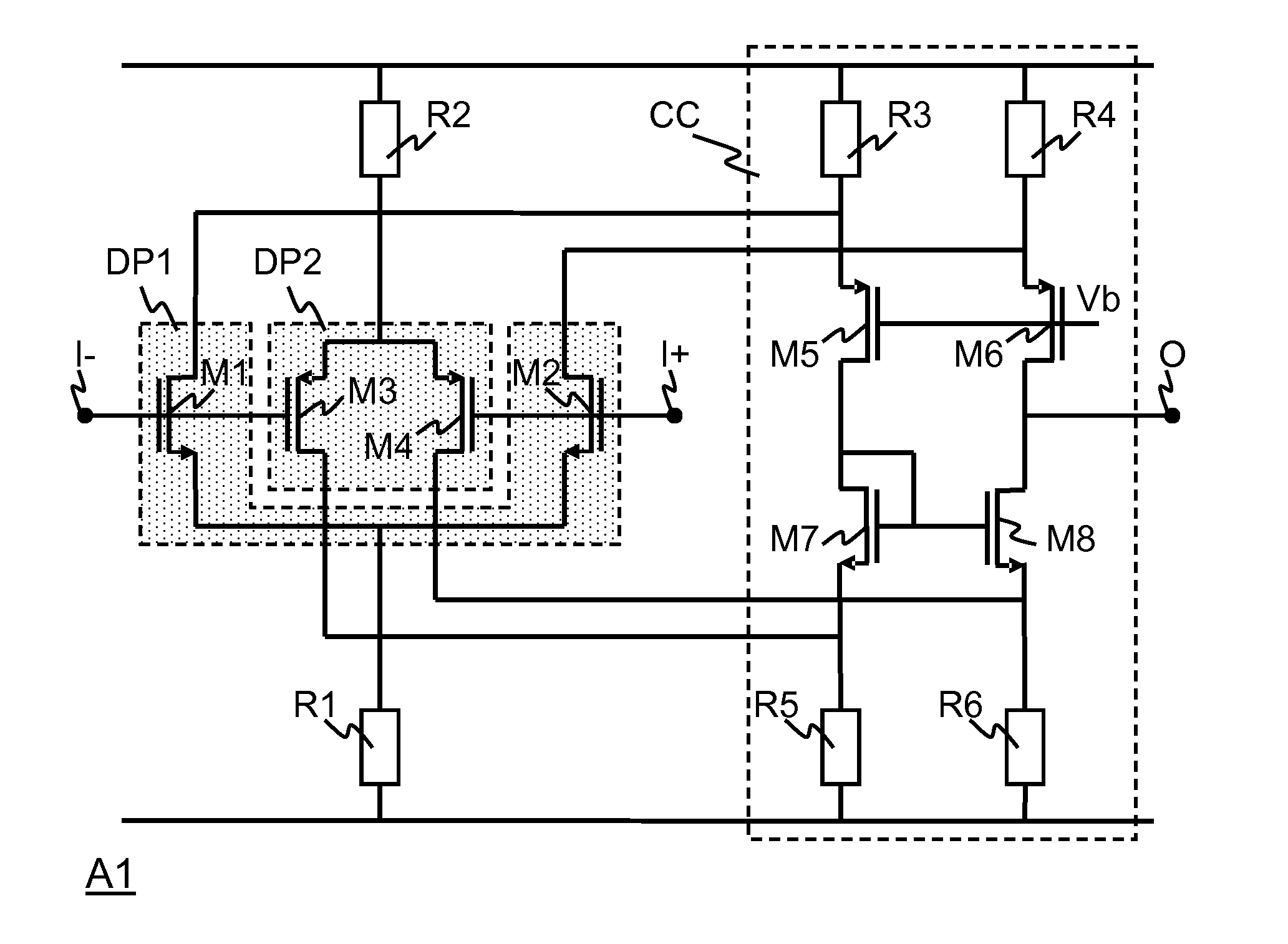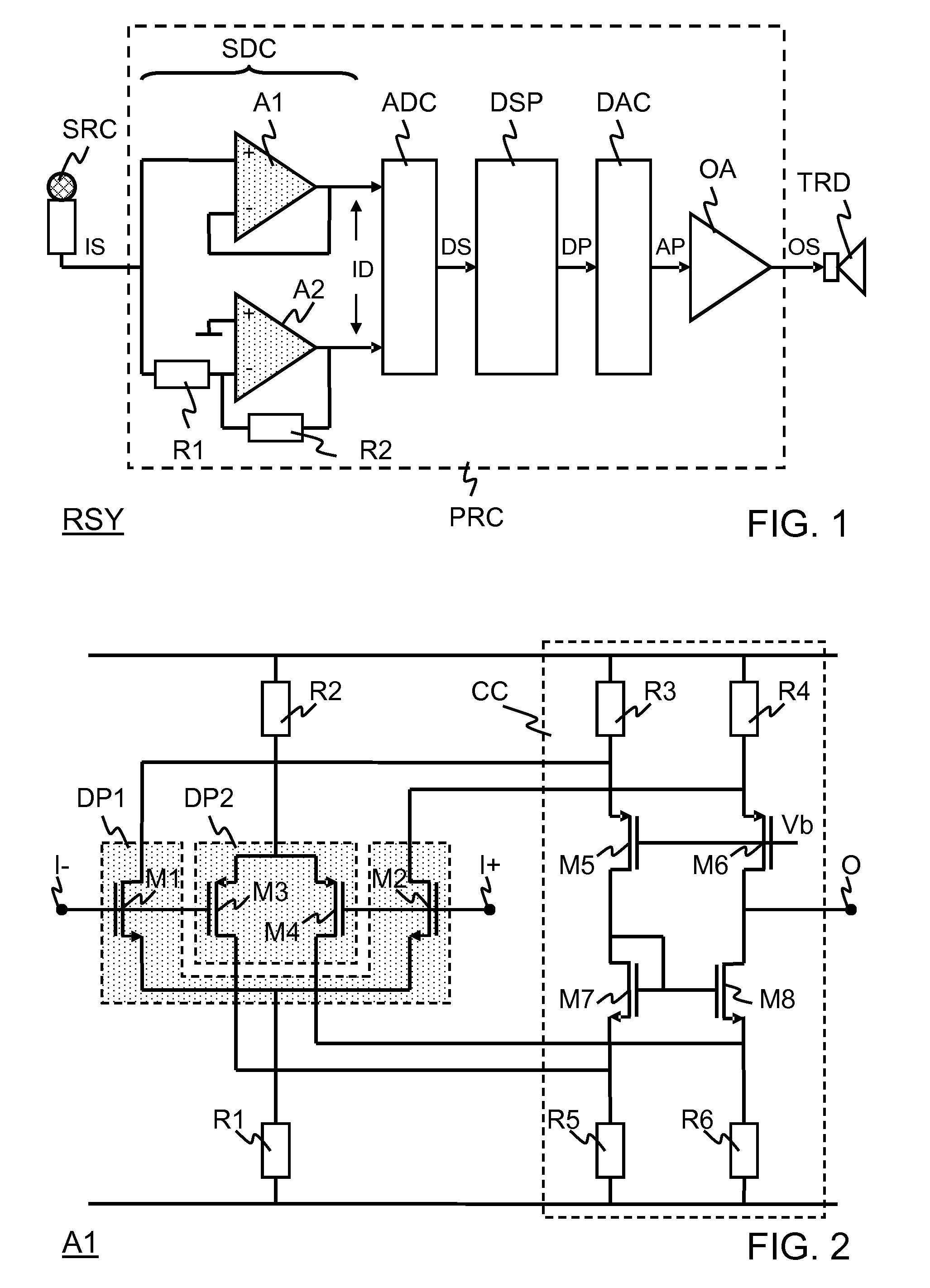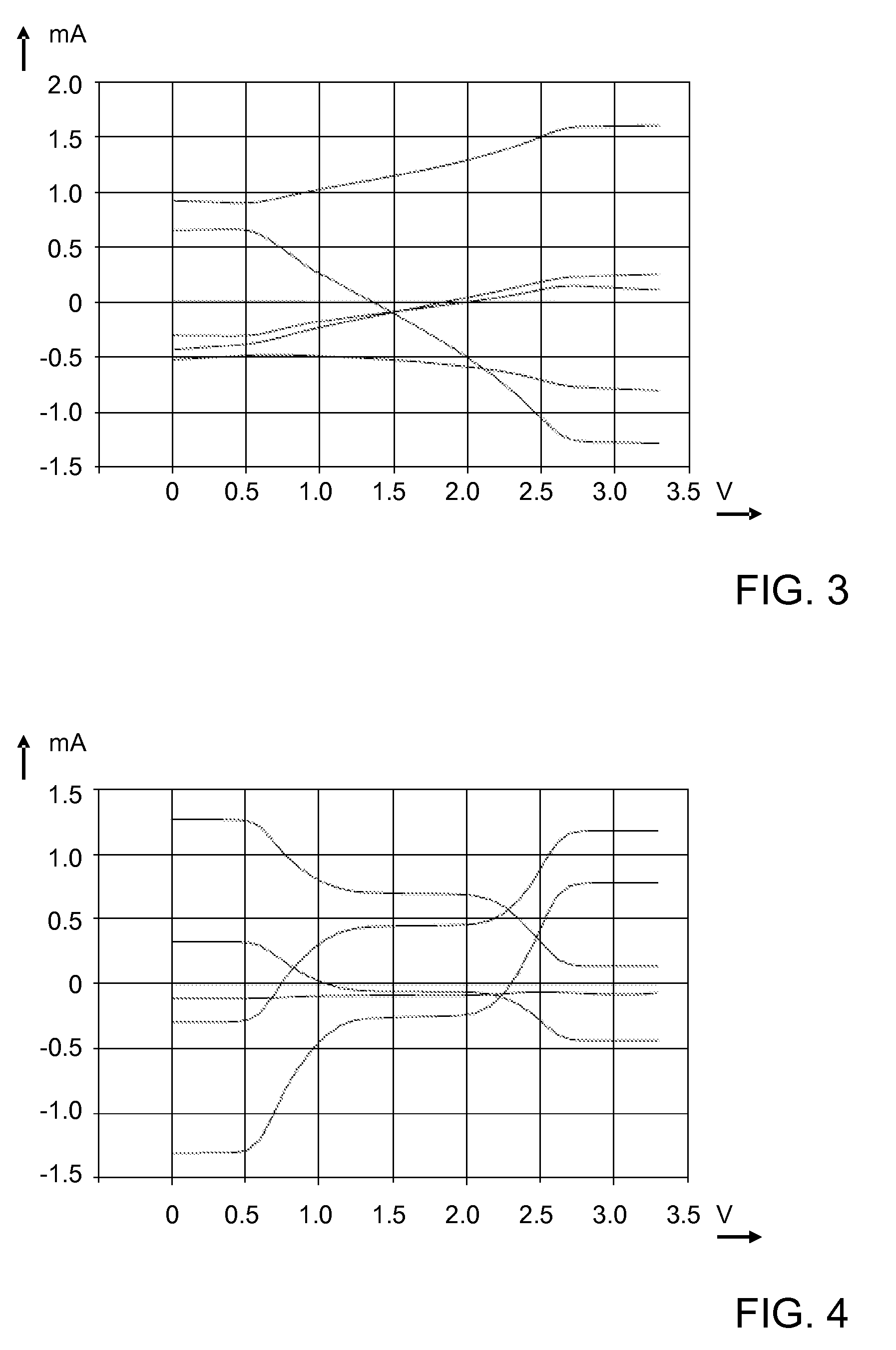Signal processor comprising an amplifier
a signal processor and amplifier technology, applied in the field of signal processing, can solve the problems of significant distortion component, non-negligible tail current modulation characteristic, and substantially nonlinearity, and achieve the effects of reducing distortion, reducing imbalance in the pair of complementary, and reducing offset output curren
- Summary
- Abstract
- Description
- Claims
- Application Information
AI Technical Summary
Benefits of technology
Problems solved by technology
Method used
Image
Examples
Embodiment Construction
[0021]FIG. 1 illustrates a signal rendering system RSY that comprises a signal source SRC, a signal processor PRC, and a signal transducer TRD. The signal source SRC may be in the form of, for example, a microphone. The signal transducer TRD may be in the form of, for example, a loudspeaker. The signal processor PRC may be implemented in the form of, for example, an integrated circuit.
[0022]In more detail, the signal processor PRC comprises a single-ended to differential converter SDC, an analog-to-digital converter ADC, a digital signal processor DSP, a digital to analog converter DAC, and an output amplifier OA. The single-ended to differential converter SDC comprises two amplifiers A1, A2. Each amplifier has an inverting input +, a non-inverting input −, and an output. Amplifiers A1 operates as a non-inverting buffer by means of a short circuit between the output and the inverting input. This amplifier A1 will be referred to as non-inverting amplifier A1 hereinafter. The non-inve...
PUM
 Login to View More
Login to View More Abstract
Description
Claims
Application Information
 Login to View More
Login to View More - R&D
- Intellectual Property
- Life Sciences
- Materials
- Tech Scout
- Unparalleled Data Quality
- Higher Quality Content
- 60% Fewer Hallucinations
Browse by: Latest US Patents, China's latest patents, Technical Efficacy Thesaurus, Application Domain, Technology Topic, Popular Technical Reports.
© 2025 PatSnap. All rights reserved.Legal|Privacy policy|Modern Slavery Act Transparency Statement|Sitemap|About US| Contact US: help@patsnap.com



